Step by Step
This sample IVF protocol is for ovarian stimulation using Lupron without birth control pills.
- This in vitro fertilization stimulation protocol is often referred to as Lupron down regulation, or “luteal Lupron” or “long Lupron”.
- For many fertility doctors and patients, this is the standard IVF protocol
- This schedule shows the main steps and timing of IVF drugs, approximate timing of ovarian stimulation monitoring, and procedures.
- This example is for a 28 day menstrual cycle. Birth control pills are not being used to control the menstrual cycle in this example.
- For cycles using a birth control pill (BCP or OCP), we usually give 12-21 days of pills overlapping Lupron with the last 3 pills. A period starts a few days after the last pill. Ovarian stimulation shots start soon thereafter.
| Sunday | Monday | Tuesday | Wednesday | Thursday | Friday | Saturday |
|---|---|---|---|---|---|---|
| 1 Start Lupron Menstrual cycle day 21 |
2 Lupron Menstrual cycle day 22 |
3 Lupron Menstrual cycle day 23 |
4 Lupron Menstrual cycle day 24 |
5 Lupron Menstrual cycle day 25 |
6 Lupron Menstrual cycle day 26 |
7 Lupron Menstrual cycle day 27 |
| 8 Lupron Menstrual period starts |
9 Lupron Start FSH injections Blood and ultrasound Stimulation day 1 |
10 Lupron FSH Stimulation day 2 |
11 Lupron FSH Stimulation day 3 |
12 Lupron FSH Blood and ultrasound Stimulation day 4 |
13 Lupron FSH Stimulation day 5 |
14 Lupron FSH Blood and ultrasound Stimulation day 6 |
| 15 Lupron FSH Stimulation day 7 |
16 Lupron FSH Blood and ultrasound HCG Injection Stimulation day 8 |
17 | 18 Egg Retrieval Procedure |
19 Start daily progesterone shots or vaginal cream |
20 | 21 Embryo Transfer Procedure (day 3 transfer) |
| 22 | 23 Embryo Transfer Procedure (day 5 transfer) |
24 | 25 | 26 | 27 | 28 |
| 29 | 30 | 31 | 1 Blood for pregancy test |
2 |
Key to table:
Blood and ultrasound = blood test for hormone values (estrogen levels in IVF stimulation are important) and transvaginal ultrasound to measure the follicle sizes in the ovaries. These visits usually take about 20-30 minutes in our offices and can be scheduled as early as 6:30AM.
Lupron = subcutaneous injection of a medication called Lupron (GnRH agonist). This medication is taken once daily.
FSH = subcutaneous injection of a medication containing follicle stimulating hormone (FSH), which causes follicles containing eggs to develop in the ovaries.
HCG injection = subcutaneous or intramuscular injection of a medication called HCG, which causes the eggs to complete the maturation process. This is taken only once in the cycle.
Progesterone = vaginal cream or suppositories or intramuscular injection of a medication (female hormone) called progesterone. This drug helps to prepare a receptive uterine lining for embryo implantation.
Egg retrieval procedure = the procedure that obtains eggs from the ovaries
Embryo transfer procedure = the procedure that places embryos back in to the uterine cavity
The example above is a typical IVF cycle. Most patients will need about 4 visits for monitoring the stimulation (shown as “Blood and Ultrasound” on the calendar) before they get the HCG trigger shot. Some patients will need only 3 monitoring visits and some require 5 or 6 visits. It depends on the woman’s response to the medications.
The duration of the ovarian stimulation process can be shorter or longer than that shown above. The example above shows 8 days of stimulation drugs (FSH shots) before the HCG trigger shot. The average number of days of taking the FSH injections is 9-10, with the general range being 7-14.
IVF Due Date Calculator
Adding the 14 days to the 266 days gives 280 days, or 40 weeks. The due date is traditionally set at 40 weeks from the first day of the last menstrual period in a normal pregnancy (in a woman with 28 day cycles).
Adding the 14 days to the 266 days gives 280 days, or 40 weeks. The due date is traditionally set at 40 weeks from the first day of the last menstrual period in a normal pregnancy (in a woman with 28 day cycles).
At our clinic, we use an Excel spreadsheet to calculate the exact due date for our pregnant patients. We enter the date of the egg retrieval procedure and the spreadsheet adds 266 days and gives us the “due date”, or EDC (estimated date of confinement).
To do this manually with a calendar – count 38 weeks from the day of the egg retrieval to get the due date after in vitro fertilization.










